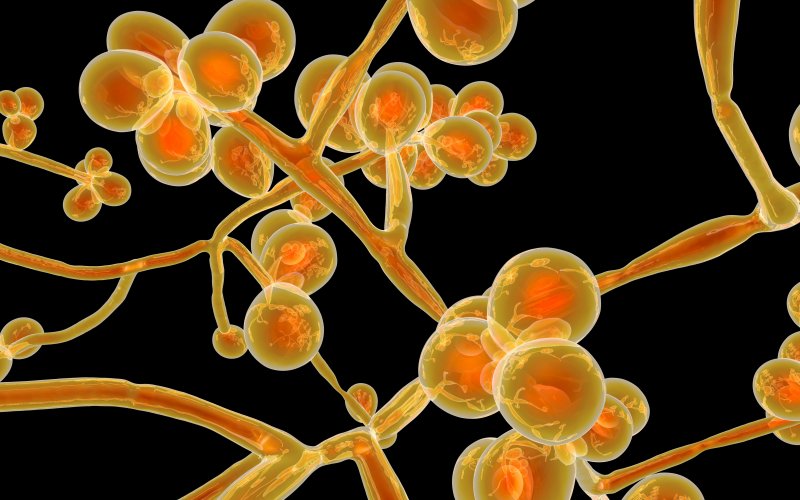Candida auris(C. auris) is a type of incentive that can beget severe illness and spreads fluently among cases in healthcare installations. It’s frequently resistant to antifungal treatments, which means that the specifics that are designed to kill the fungus and stop infections don’t work.
Symptoms
auris can beget infections in different corridor of the body similar as in the bloodstream, open injuries, and cognizance. The symptoms depend on the candida auris position and inflexibility ofC. auris infection. Symptoms may be analogous to symptoms of an infection caused by bacteria. There isn’t a common set of symptoms specific forC. auris infections.
Colonization
People can getC. auris on their skin and other body spots without getting sick or having an infection. You may hear health candida auris care providers relate to this as ‘ colonization. ’ Someone who’s settled can still transmitC. auris onto shells or objects that they communicate , which can also spread it to other cases.
judgments( Testing and Webbing)
There are two ways that a healthcare provider can see if a case is infected or settled withC. auris.
Colonization webbing – a healthcare provider hearties the case’s skin by rubbing a tar near the armpits and groin and sends the tar to a laboratory for testing.
Clinical instance testing – If a case is showing candida auris symptoms of an infection of unknown cause, a healthcare provider may collect a clinical sample, like blood or urine. They generally test for numerous types of infections including those caused by bacteria and the results may show that the case hasC. auris.
Retesting cases infected or settled withC. auris isn’t recommended and shouldn’t be used to change infection control measures because it doesn’t insure that the patient no longer hasC. auris on their skin or other body spots and won’t spread it to others.
still, healthcare providers take special way to help the spread of C, If a case is settled or infected. auris, including placing the case in a room separated from those at threat, drawing the apartments with special detergent products, and wearing gloves and gowns to deliver care.
Healthcare installations candida auris should be informed if an incoming case has ever
Tested positive forC. auris, with or without symptoms.
Was exposed to another case withC. auris.
Was in a installation where an outbreak was being.

Cases withC. auris frequently continue to have it on their skin or other body spots for a veritably long time, whether or not they ever have symptoms. In utmost candida auris situations, these measures to help spread continue the whole time the case is in the installation. still, some installations, like some nursing homes, determine forestallment measures on a case- by- case base and grounded on the installation’s policy.
Continuing Education Activity
Candida auris is an arising fungal pathogen that’s associated with nosocomial infections and is considered a serious global health trouble. It has multitudinous acridity rates and showsmulti-drug resistance patterns to common antifungal remedy used for other invasive Candida infections. incentive identification styles employed by laboratories generally miscallC. auris as other provocations making the discovery and control of this pathogen delicate. The transmission of Candida auris occurs in nosocomial settings, indeed in those enforcing infection forestallment and control measures. In the United States, it’s a nationally notifiable pathogen that allows for public health shadowing and containing its spread. This exertion reviews the evaluation, treatment, and operation of Candida auris and explains the part of the interprofessional platoon in the care of cases with this condition.
auris may beget invasive infections associated with high mortality. It’s considered amulti-drug resistant species, having variable resistance patterns to numerous typical antifungal agents used to treat other Candida infections. In recent times, the rising frequence of infection and colonization withnon-albicans Candida species is allowed to be due to the inordinate use of precautionary antifungals similar as fluconazole.( 3) incentive identification styles employed by laboratories generally miscallC. auris as other provocations making the discovery and control of this pathogen delicate. The transmission of Candida auris occurs in nosocomial settings, indeed in those enforcing infection forestallment and control measures. In the United States, it’s a nationally notifiable pathogen that allows for public health shadowing and containing itsspread.Candida auris is a incentive species belonging to the rubric Candida. It’s so named because it was first insulated from the external observance conduit of a case in a Japanese sanitarium.( 1) Analysis of the incentive genomic DNA showed a distinct species with close phylogenetic biographies to Candida ruelliae, Candida haemulonii,C. duobushaemulonii, andC. pseudohaemuloniipidemiology
inheritable analysis ofC. auris isolates has demonstrated four distinct geographical clades South Asian, East Asian, South African, and South American, with a possible fifth clade forming from Iran.( 9) inheritable differences between the clades are suggestive thatC. auris surfaced singly in the forenamed geographic locales.
The frequence of Candida auris infection encyclopedically is unknown and likely underreported due to the lack of commercially available individual styles and resemblance to other phenotypically related Candida species.( 10) Since its original description in Japan in 2009, it has come wide across all mainlands except Antarctica. A study queried the transnational watch Antifungal Surveillance Program that sought to identify 15,271 candidemia isolates collected between 2004 to 2015 from 152 transnational medical centers( Asia, Europe, Latin America, and North America). It showed that no Candida auris isolates were linked before 2009 and that the frequence ofC. auris was rare before 2009.( 11) farther surveillance studies of misapplied samples recovered from South Korea in 1996, 2004, and 2006, and Pakistan in 2008 latterly detectedC. auris.( 12)
